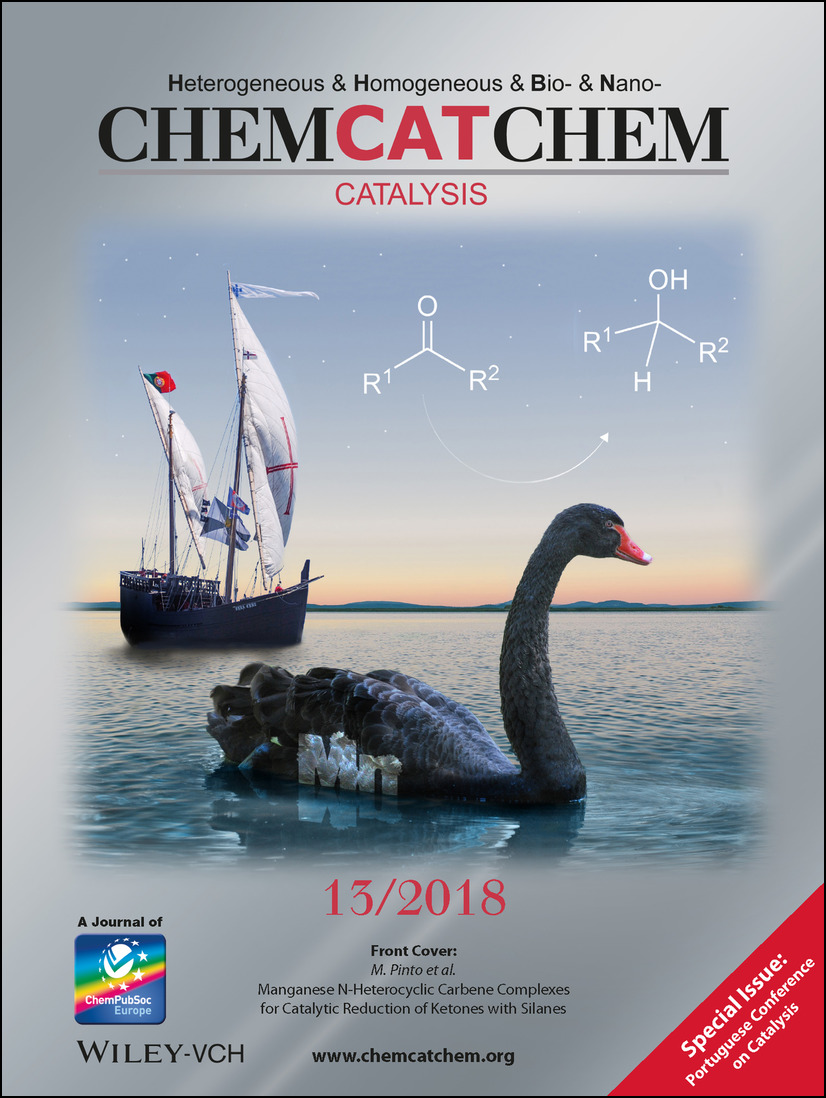Unique and environmental friendly catalysis
Oeiras, 20.08.2018
The hydrosilylation of carbonyl groups is an important synthetic transformation that is widely used in the laboratory and in industry. This reaction features high atom economy for the production of silylethers and a convenient method the preparation of alcohols when a sequence of hydrosilylation/hydrolysis is performed. Up to now, the most active catalysts for this reaction are based on precious metals, such as rhodium and ruthenium. Catalysts based on manganese are highly attractive, since this metal is abundant, inexpensive and non-toxic. The few examples of Mn-based catalysts for this reaction that have been reported in the literature so far, are very sensitive to water-rigorously dry conditions are needed for their manipulation. This fact represents a drawback for their application in industry since requires the implementation of expensive techniques. Now, researchers from Beatriz Royo Lab have developed the first water and air stable Mn-based catalyst capable to efficiently catalyse the hydrosilylation reaction under air. The results were published on ChemCatChem and the work was considered as a highly important paper and selected to be presented on the frontcover of the issue.
 “We are very happy with these results and for being selected to be illustrated on the cover of the issue” said Beatriz Royo, corresponding author and leader of the Organometallic Catalysis Lab at ITQB NOVA. “The unexpected flourishing of manganese as a catalyst reminded us of the tale of the black swan. The cover image also shows a Portuguese caravel as a symbol of the Portuguese discoveries, highlighting the fact that this issue is dedicated to the International Symposium on Synthesis and Catalysis held in Évora last year.”
“We are very happy with these results and for being selected to be illustrated on the cover of the issue” said Beatriz Royo, corresponding author and leader of the Organometallic Catalysis Lab at ITQB NOVA. “The unexpected flourishing of manganese as a catalyst reminded us of the tale of the black swan. The cover image also shows a Portuguese caravel as a symbol of the Portuguese discoveries, highlighting the fact that this issue is dedicated to the International Symposium on Synthesis and Catalysis held in Évora last year.”
Original article
ChemCatChem 2018, 10, 2734 https://doi.org/10.1002/cctc.201800241
Manganese N-Heterocyclic Carbene Complexes for Catalytic Reduction of Ketones with Silanes
Mara Pinto, Sofia Friães, Federico Franco, Julio Lloret-Fillol, Beatriz Royo







